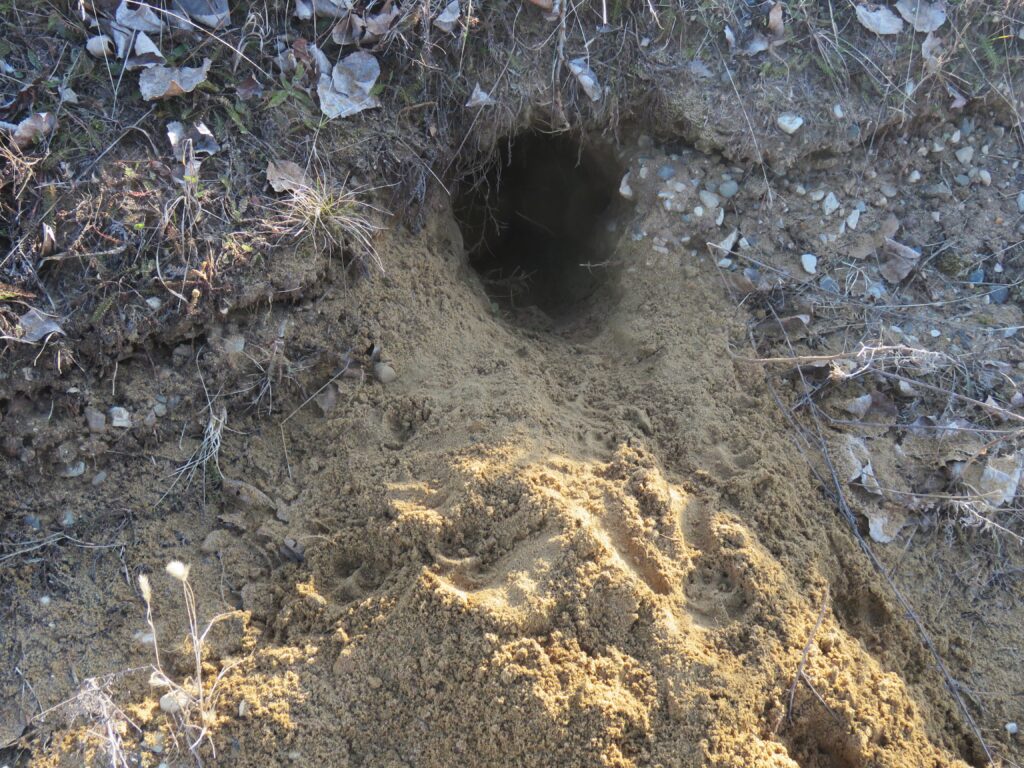Groundhogs are a large species of rodent found exclusively in North America. They have long been known to be a terrible nuisance for farmers, due to their well-documented habit of devouring a wide variety of crops. In addition, as burrowing animals, their tunnels can wreck yards and undermine foundations.
Because of all of this, a groundhog is just not a creature you want anywhere near your property (unless, of course, you find their whistling so compelling that you’re willing to put up with everything else).
Groundhog Control
When it comes to rodents, prevention is of paramount importance, because they’re often very difficult to eradicate once dug in (no pun intended). Try to identify and remove anything in your yard they might be attracted to, such as:
If you have a garden, be diligent about harvesting, and pick up fallen fruit often. Groundhogs are hardly discriminatory when it comes to eating fruits and veggies.
In addition to ravaging your garden, groundhogs eat common lawn weeds like dandelions and clover, so keeping your yard well-groomed deprives them of food, and looks good, too.
Groundhogs’ two upper front teeth never stop growing (they can grow as fast as 1/16th of an inch per week!), so they keep that growth in check by consistently gnawing on things. One of the more popular things to gnaw on is old tree stumps, so removing them will give groundhogs one less reason to pay you a visit. Also, woodchucks like to burrow under woodpiles, so think about chucking that wood.
The best groundhog deterrent, though, is a fence. Groundhogs can climb and burrow, you’ll need to use six-foot wide woven-wire fencing, with four feet above the ground and two feet below. It goes without saying that a fence this robust would keep out many animals, not just groundhogs.
Natural Ways to Get Rid of Groundhogs
If you already have groundhogs, here are a couple methods for removing them:
Epsom Salt. Epsom salt sprinkled around a groundhog burrow is known to repel them. If groundhogs are getting at your plants, you can put a small cup or plate of Epsom salt beside them, but it will have to be replenished after rain.
Used Cat Litter. Not overly hard to come by, used cat litter repels groundhogs by making them believe a predator is nearby—just pour it around the holes. It is a good practice to leave one hole alone so they can escape, instead of just staying burrowed. Make sure to be careful when handling cat litter.
Garlic. While the smell of garlic might be wonderful to many of us, to groundhogs it is a big turn-off. Crush some garlic cloves and sprinkle them around areas you want groundhogs to avoid; their sensitive noses won’t be able to handle the pungent odor.
Used Hair Clippings. This one might seem a little odd, but groundhogs don’t like the way humans smell, and our hair smells like us. If you have reservations about chopping your own hair off just to deter groundhogs, pay a visit to a local barber and ask for some clippings. Simply sprinkle the clippings around areas that you’d like groundhogs to avoid. If you want to ensure they don’t blow away in the wind, put the clippings in a fine mesh bag and stake it to the ground.
How Trutech Gets Rid of Groundhogs
Groundhogs are interesting animals that can wreak a whole lot of havoc in your yard, and potentially even burrow under your house, which can cause a whole host of problems. As such, it’s important to deal with them promptly.
Proper groundhog control requires proper identification of the main tunnel system. Homeowners can waste time, money, and effort targeting the wrong tunnels.

Groundhog Traps
Sometimes, live trapping and relocation might be the only option. Place the traps in front of burrow entrances or in your garden. Bait them with apple slices, carrots, lettuce, sweet corn, or broccoli, then work the bottom of the trap into the earth.
Check the trap often so the groundhog won’t get overly stressed out if it is captured. If you trap a groundhog, cover the trap with an old blanket while transporting it, so it doesn’t get stressed out. For release, drive at least 3 miles away from your house so it doesn’t find its way back.
Fumigation
This method should be a last resort. Fumigation entails buying a gas cartridge, igniting it, and placing it into the groundhog’s burrow, at which point the groundhog will be eliminated. Be sure to follow the instructions on the product’s label exactly, as these products are toxic. Also, it’s important to be sure that the groundhog is “home” when you actually carry out the fumigation. The best time to fumigate is the time between March and September, on cool, rainy days when the groundhog is not active.


